Since the 1980s, the annual sale on the day after Thanksgiving, popularly known as Black Friday, has been a commercialized craze to mark the start of the holiday season sale in the United States. Since then, this phenomenon has grown to epic proportions that even stretched to different countries like Canada, UK, Mexico, to name a few.
Consumers now regard Black Friday as an ingrained tradition that friends and family do together for the Thanksgiving weekend. Brad Tuttle from Time magazine views it as, “the shopping equivalent of the Super Bowl.”
“People look forward to it not necessarily for the game itself (which can be underwhelming) but because of the desire to be a part of the action, and to evaluate how this extremely hyped event unfolds—pomp, circumstance, commercials, and all,” he added.
Analyzing the consumer behavior of Black Friday shoppers
Black Friday shoppers normally get hyped when their favorite stores get bombarded with cheap prices and discounts, especially when retailers started opening their shops every Friday morning after Thanksgiving while crowds wait in line outside to avail the “doorbuster deals.”
Nowadays, technology plays a crucial role for consumers who shop during the holidays. Data from last year’s Black Friday sales from market research firm Senex showed that Amazon and Walmart were tied for the first place during the five-day Black Friday sales. Each retailer sold items from 97 million shoppers or 53% of consumers from both their online and physical stores.
Additionally, the National Retail Federation in the US found out around 108.5 million people shopped for Black Friday discounts online while 99 million went to the brick-and-mortar stores. Besides Amazon, the Top 20 websites that shoppers visited during Thanksgiving weekend were retailers that also have operational physical stores.
These data show that omnichannel retail is gaining more traction among consumers who shop for Black Friday deals during the Thanksgiving holidays. These statistics are an indication of the increasing impact that digital technology, via e-commerce in retail, have on brick-and-mortar stores.
Moreover, it underlines the importance of having an effective omnichannel strategy for the retail industry. Director of MB&G Consulting Bill Davis, who wrote a report on omnichannel retail, defined it as “the logical evolution of multi-channel retailing in which a customer can use more than one sales channel to shop from a retailer for any given transaction.”
The evolution of consumer behavior for Black Friday shoppers also implies that retailers should focus on creating innovative strategies that will capitalize on understanding their consumer’s journey – from their intent to buy up to the purchase of the product. It is also important to understand the role of digital technology throughout the stages of browsing, selecting, purchasing, and post-purchasing services for the consumer.
By improving the overall omnichannel consumer experience of their shoppers, retailers now have the chance to drive sales growth on Black Friday by leveraging their physical stores to drive traffic to their websites online. One of the ways to effectively capitalize on the use of digital technology to increase Black Friday retail sales is through the use of FOMO marketing.
FOMO Marketing as an essential tool to increase Black Friday sales
According to the Urban Dictionary, FOMO stands for “fear of missing out” which refers to,
“a form of social anxiety characterized by a compulsive concern that one might miss an opportunity or satisfying event, often aroused by posts seen on social media websites.”
FOMO is currently a widely accepted phenomenon among millennials who use social media channels such as Facebook and Instagram. Research shows that one of the repercussions of social media on marketing and consumer behavior is FOMO. Since these platforms offer a unique opportunity to help consumers “communicate with each other and allow them to share their experiences and opinions about products, brands and companies” (Argan, 2018).
FOMO Marketing appeals most prevalently among 69% of millennials whose innate fear of missing out will more likely make them buy products during seasonal sales such as Black Friday. In a world where real-time experiences are being documented on social media, FOMO drives millennials to make Black Friday purchases while sharing and engaging with other consumers online.
Let’s take a look at these seven FOMO Marketing strategies to cash in on Black Friday:
Create a sense of urgency by sending out Black Friday emails.
Build your Black Friday sales momentum by working on your Black Friday email marketing campaigns. It will not only create a sense of urgency for your consumers to buy from your shop, but it will also inform your shoppers on deals that they can anticipate. Use catchphrases like, “Don’t miss out on” or “Great discounts for one day only” to let your customers be aware that the Black Friday deals you are offering have an expiration date.
Take a look at this Black Friday email campaign from Forever 21:

Effective email campaigns will make the shopper be motivated to take advantage of the offer and shop. Without the “today only” deadline, there wouldn’t be a real incentive for the consumer to click through the email. You have to make sure to pique their interest with an effective call-to-action to follow through the deal and make the purchase.
Manage your online reputation.
Make sure that you are geared up in the days leading up to the Black Friday sale by effectively managing your online reputation. As brands compete to get a piece of the Black Friday pie, having a pristine online reputation is crucial to get ahead of the competition. On Black Friday, you are competing on more than just the price of your discounted goods.
Your potential consumers will also want to know if they are buying from a reputable store. Research shows that 88% of Black Friday shoppers are inclined to trust online reviews as well as personal recommendations, while 86% of consumers will likely be hesitant to buy from a store that has negative reviews.
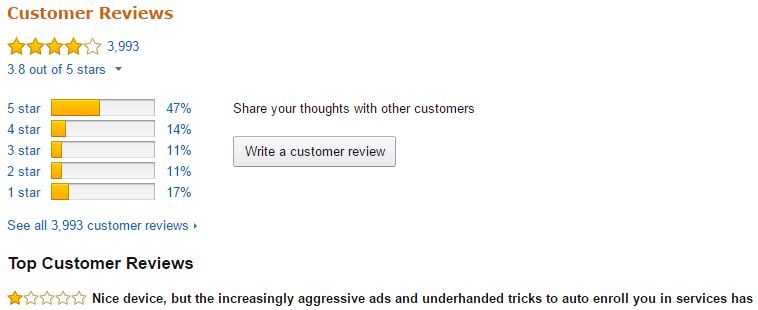
Your store needs to set up a proper monitoring and response mechanism for your online reviews. Responding to a negative review will show your potential customers that you care enough to inquire about their purchase experience. You should not let one bad customer review ruin hundreds of potential sales just because you did not respond publicly during the Black Friday holiday season.
Go mobile!
Reporter Lauren Thomas from CNBC noted during last year’s Black Friday sale that online shoppers were breaking the record on mobile transactions as 46.2% of the total Black Friday revenue came from mobile devices like smartphones and tablets.
You need to expect that a significant number of your customers will visit your website from their smartphones this year. To get in the game, you have to make sure that your business has a well-crafted mobile experience that meets the needs of your mobile web visitors.
Here’s Sephora’s 2018 Black Friday promo ad which encourages their shoppers to download their app to get an exclusive sneak peek deals:
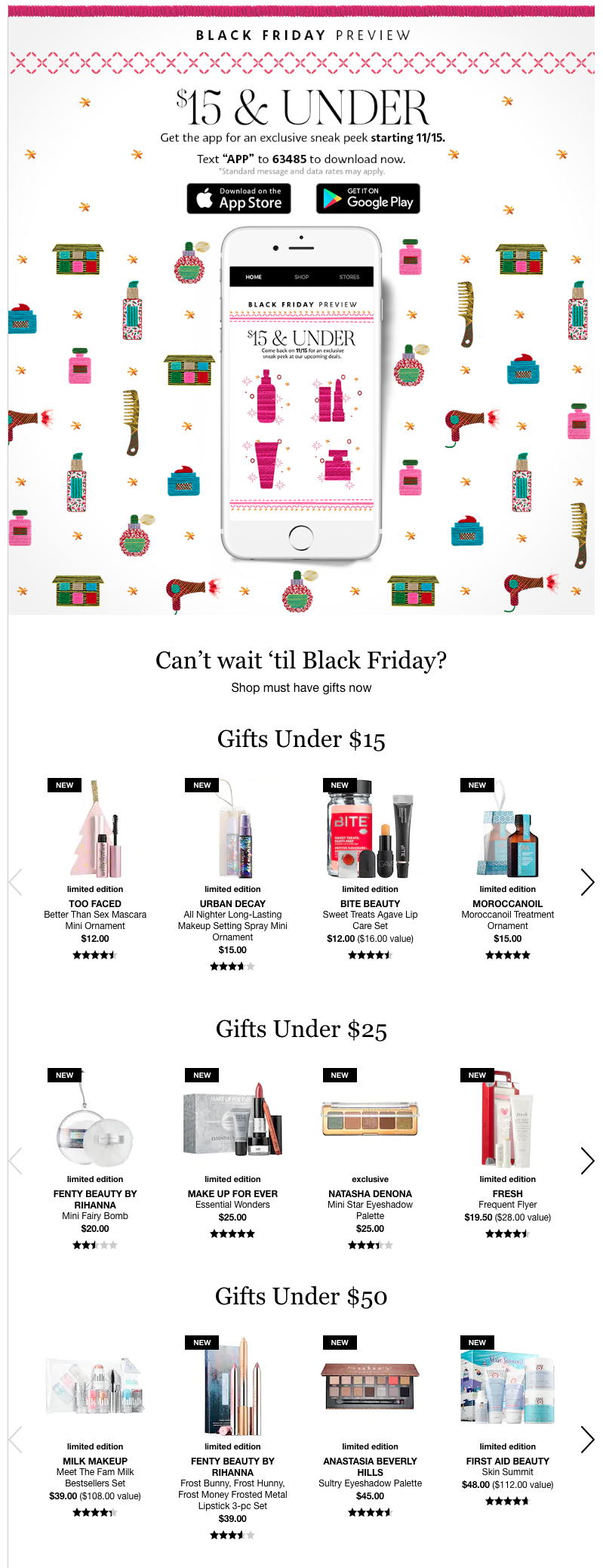
Don’t forget to have a mobile-friendly website that loads quickly so that your shoppers can easily be directed to the products that they want to buy. It also pays to invest in promotional ads that have a strong CTA directed straight to their smartphones (just like what Sephora did). Don’t be a cheapskate on mobile promotions during the holiday season, it will be worth the investment.
Invest in witty and eye-catching content.
Whether it’s your Black Friday microsite, social media captions, or video promotions, make sure that your brand will stand out with engaging ad copies. Communicate with your consumers by hyping up your sales promotions with creative content that will spark their interests. Have fun and be creative with your blog posts and banner ads but don’t forget to have a clear and concise CTA to raise your brand awareness and drive more traffic to your website this Black Friday.
Shakr, an online video ads creator, can help create eye-catching ad copies for your Black Friday promotions. You can choose from an array of templates to fit your website’s aesthetic.
Consumer electronics retailer Best Buy took to Twitter and Instagram to foster consumer engagement on their exclusive online and doorbuster deals during the Black Friday sale last year.
On the 4th Day of Doorbusters Best Buy gave to you…
Save $135 on Sony Noise-Cancelling Wireless Headphones. https://t.co/4wsiH4FkOm pic.twitter.com/NMNxA91DYh
— Best Buy Deals (@BestBuy_Deals) December 4, 2017
By creating a holiday-themed promotion called 20 Days of Doorbuster Deals, Best Buy successfully extended its online discounts until after the Black Friday holiday weekend to capture the attention of consumers who are looking for discounted deals for the Christmas season.
Create product scarcity by leveraging on exclusive deals and discounts.
Use the FOMO psychology by showing your shoppers that you have exclusive deals and limited supply. Including phrases like “until supplies last” or “deal available to the first 100 customers” into your ad copy will make them more inclined to purchase your product out of fear that they are going to miss out on exclusive deals.
A good FOMO campaign will play on that compulsive fear of scarcity to inspire your consumers to click that Buy Now button. Amazon does this really well on their Early Black Friday deals.

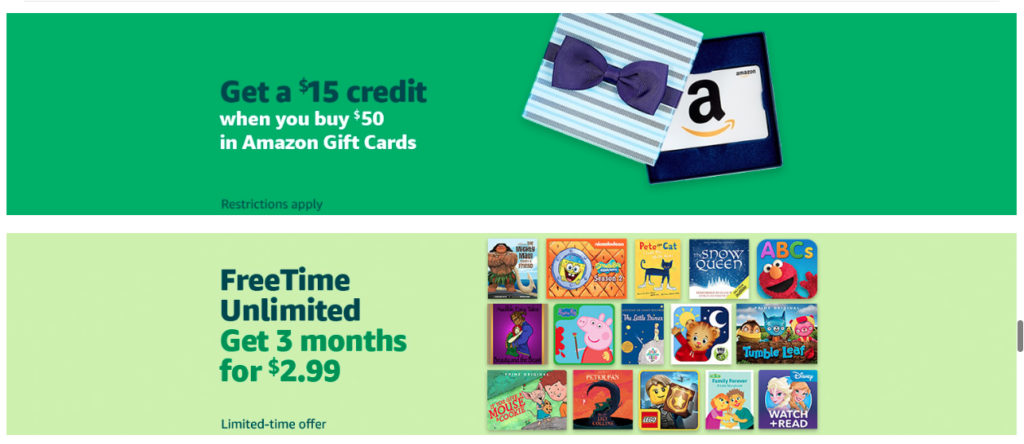

A few weeks before the 2018 Black Friday, Amazon had already set up a dedicated landing page for early promotions. With several banner ads featuring limited-time offer deals and upcoming deals, consumers will likely have the urge to check out those early promotions. Plus, they also have a video live stream that served as an online home shopping network that discusses the products featured on their early Black Friday deals.
Be social.
Using social media to engage with consumers may seem like a very obvious Black Friday sales strategy. However, doing it well is another matter altogether. Make sure that you know your target audience and find out which are the best social media platforms you can use to talk to them.
You can share interactive holiday-themed content that highlights several of your products on discount with a #blackfriday on social media. British online fashion and cosmetic retailer Asos did this really well on Instagram last year.
Posting thematic flat lays of their discounted products with witty captions on Instagram helped capture the attention of their Asos’ fashion-crazed audience on social media who are looking for a wardrobe update. In the case of Asos, a well-curated photo on Instagram works wonders if you know your target audience and the kind of posts they want to see on your feed.
Make it obvious.
Black Friday may just be a one-day sales event. But you should also consider that it’s the most highly anticipated sales event for the whole month of November. That’s why you should also contemplate on going all out with your FOMO messaging by adding a countdown clock on your Black Friday landing page to create a sense of urgency among your consumers.
Look at what Canon did to their website for this year’s Black Friday sale:
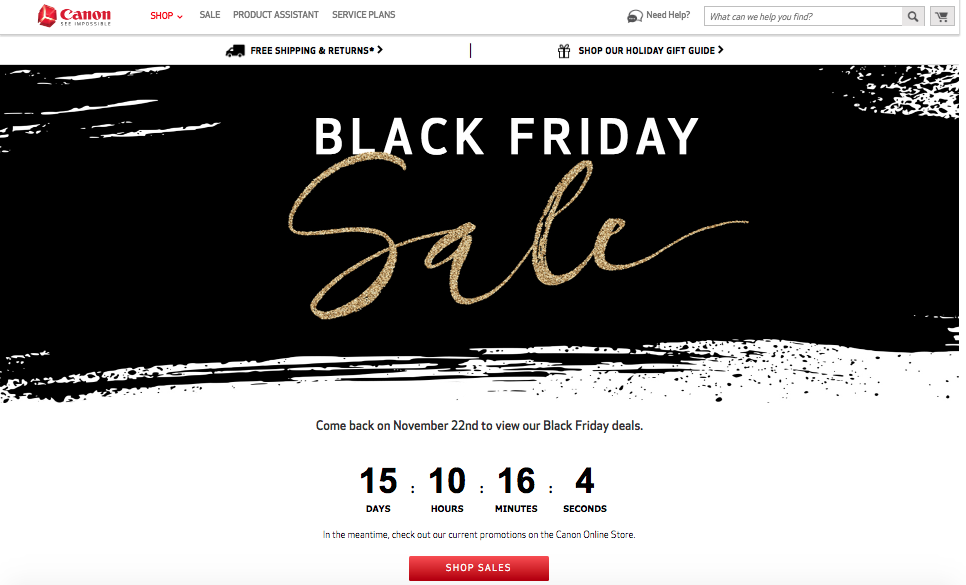
In the days leading up to the Black Friday sale, the countdown clock helps create a sense of anticipation for consumers who wish to have first dibs on the exclusive deals and discounts that your brand offers.
Are you ready to hit your Black Friday sales target and take it a notch higher this year?
Just remember to create Black Friday deals that will reward the kind of consumers you want to keep. Because ultimately, it’s the loyal shoppers who will reward you for your FOMO marketing efforts. Make sure you stand out by crafting unique and eye-catching Black Friday promotional ads that will push the boundaries of traditional marketing and lets you think outside the box.

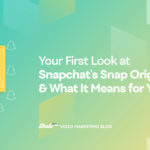

2 comments On 7 FOMO Marketing Strategies to Cash in on Black Friday
Pingback: 7 FOMO Marketing Strategies to Cash in on Black Friday – Online rich life tips ()
Pingback: 7 FOMO Marketing Strategies to Cash in on Black Friday – Local Business Generator ()
Comments are closed.